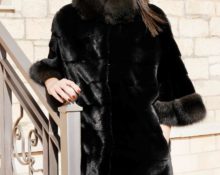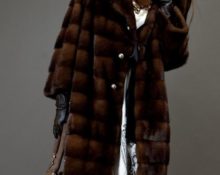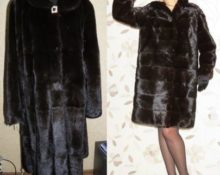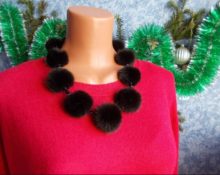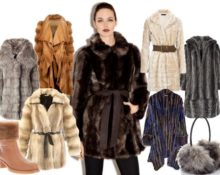A mink coat is a classic, synonymous with elegance and chic. No other fur has such noble, rich beauty and lightness. It is not surprising when, encountering the label “wild mink fur coat,” customers wonder what it is.
What is wild and non-wild mink?
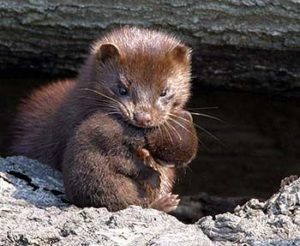 Mink can be raised in captivity or can be wild. On farms, animals are raised specifically for their beautiful fur; its quality becomes the main goal of breeders. Accordingly, animals receive everything they need for this: good nutrition, vitamins, disease prevention. Wild animals obtain food on their own, which is fraught with difficulties and, as a rule, does not provide the maximum necessary, but the minimum necessary for survival.
Mink can be raised in captivity or can be wild. On farms, animals are raised specifically for their beautiful fur; its quality becomes the main goal of breeders. Accordingly, animals receive everything they need for this: good nutrition, vitamins, disease prevention. Wild animals obtain food on their own, which is fraught with difficulties and, as a rule, does not provide the maximum necessary, but the minimum necessary for survival.
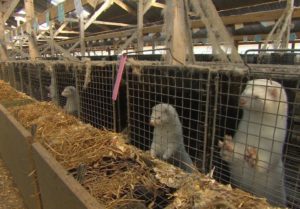 The fur of animals raised on farms is much better. More shiny, wear-resistant, available in a variety of colors and with much less waste. And this ultimately greatly affects the cost of the finished product. Today, 80% of the fur market consists of furs from animals raised by humans.
The fur of animals raised on farms is much better. More shiny, wear-resistant, available in a variety of colors and with much less waste. And this ultimately greatly affects the cost of the finished product. Today, 80% of the fur market consists of furs from animals raised by humans.
REFERENCE. There are several types of mink. Each has its own fur characteristics. Russian is the warmest. The Scandinavian, with a short and high pile and a very thick undercoat, is the most common; it is divided into Danish and Finnish. North American - similar to velvet, is exclusive.
Why is a wild mink coat so rare?
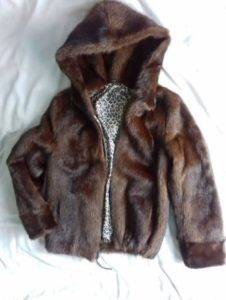 Today, a fur coat made from wild mink fur in the store is a huge rarity. Usually this is an advertising gimmick to convince the buyer that the fake in front of him, made from nutria or marmot fur, is just a specially raised mink, rarer, and therefore valuable.
Today, a fur coat made from wild mink fur in the store is a huge rarity. Usually this is an advertising gimmick to convince the buyer that the fake in front of him, made from nutria or marmot fur, is just a specially raised mink, rarer, and therefore valuable.
The fur of an animal raised in natural conditions is so rare for several reasons. The first is that to obtain a product of the same quality, you will need to kill more animals. Hunting wild animals is not as profitable as breeding on fur farms.
The second reason is environmental considerations. Trapping of most species of wild mink is prohibited. The European variety is listed in the Red Book of the International Union for Conservation of Nature, Russia and a number of Russian regions.
The main differences between wild and ordinary mink
Mandatory chipping of fur products, introduced in 2016, allowed us to breathe more freely - today we can clearly trace the authenticity, origin and quality of an expensive purchase.
Visual differences
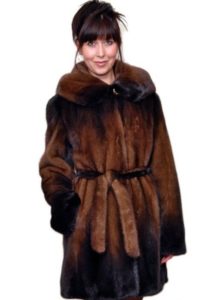 Wild mink fur is colored in only one color - dark gray-brown. Downy and guard hairs are longer. The fur is smoother to the touch, soft, and has high water-repellent properties. In appearance, the skins resemble sable. A high-quality product from a wild variety will be very beautiful, rich, but more expensive in price.Skins are cheaper to purchase due to the high percentage of defects, mechanical damage or defects from parasites. However, the consumption of skins will be higher.
Wild mink fur is colored in only one color - dark gray-brown. Downy and guard hairs are longer. The fur is smoother to the touch, soft, and has high water-repellent properties. In appearance, the skins resemble sable. A high-quality product from a wild variety will be very beautiful, rich, but more expensive in price.Skins are cheaper to purchase due to the high percentage of defects, mechanical damage or defects from parasites. However, the consumption of skins will be higher.
REFERENCE. Marmot fur is often dyed to look like mink. To distinguish between these two types of fur, the product must be stroked with your hand against the grain. The mink's pile will return to its original position, while that of the marmot will be shaggy and prickly.
Heat resistance, wear resistance
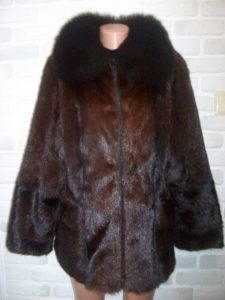 Sometimes you can find information that fur coats from the wild variety are more wear-resistant and warmer. But there are no real grounds for such conclusions. It is necessary to evaluate a specific product. Wear resistance will depend on whether the fur has undergone additional processing: dyeing, plucking, acid for greater softness. Such products last 10-20% less. A high-quality fur coat made from untreated fur with good care will last 10 years (if worn 4 months annually) without losing its appearance. High-quality products from the luxury segment, with proper care, last up to 20-30 years. The same goes for heat resistance. High-quality natural fur of minks grown in the wild and nurseries, calibrated according to the length of the pile, will not differ noticeably.
Sometimes you can find information that fur coats from the wild variety are more wear-resistant and warmer. But there are no real grounds for such conclusions. It is necessary to evaluate a specific product. Wear resistance will depend on whether the fur has undergone additional processing: dyeing, plucking, acid for greater softness. Such products last 10-20% less. A high-quality fur coat made from untreated fur with good care will last 10 years (if worn 4 months annually) without losing its appearance. High-quality products from the luxury segment, with proper care, last up to 20-30 years. The same goes for heat resistance. High-quality natural fur of minks grown in the wild and nurseries, calibrated according to the length of the pile, will not differ noticeably.
Differences in care
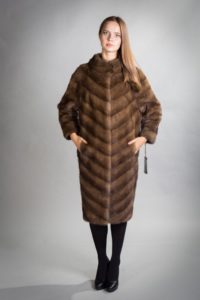 Fur coats from wild and regular mink will require equally careful care. When choosing a fur coat, you should pay attention, first of all, to the presence of chipping, quality of manufacture, model (lightweight or not), processing or coloring of the fur, and sewing method. This is what will affect the service life and nuances of care. Painted models should be worn more carefully. Otherwise, you need to follow the general rules: store cool, in a dark, well-ventilated, not damp place, avoid damage by cosmetics and household chemicals, wear carefully, without exposing the pile to creases or exposure to high temperatures.
Fur coats from wild and regular mink will require equally careful care. When choosing a fur coat, you should pay attention, first of all, to the presence of chipping, quality of manufacture, model (lightweight or not), processing or coloring of the fur, and sewing method. This is what will affect the service life and nuances of care. Painted models should be worn more carefully. Otherwise, you need to follow the general rules: store cool, in a dark, well-ventilated, not damp place, avoid damage by cosmetics and household chemicals, wear carefully, without exposing the pile to creases or exposure to high temperatures.


 0
0